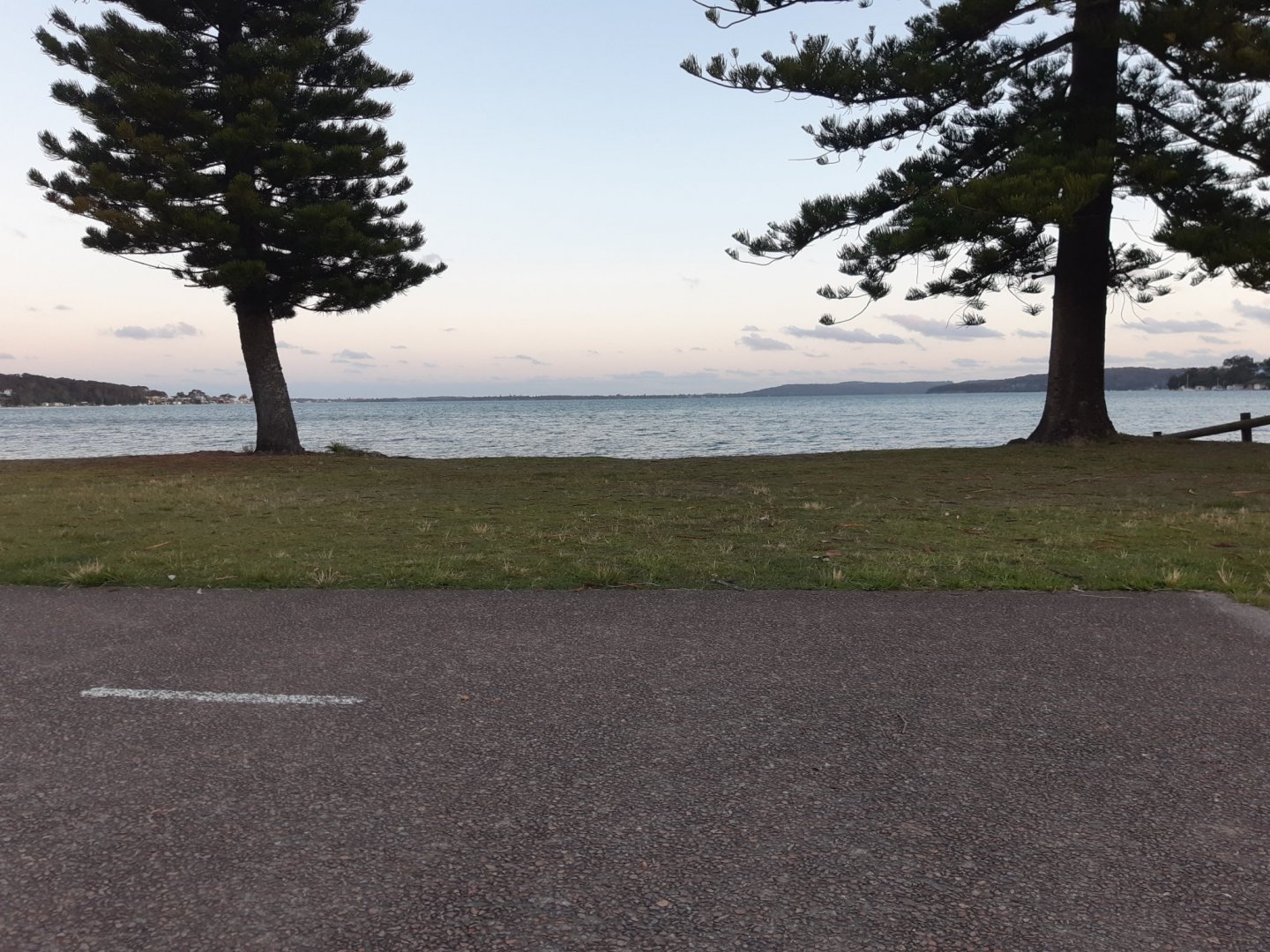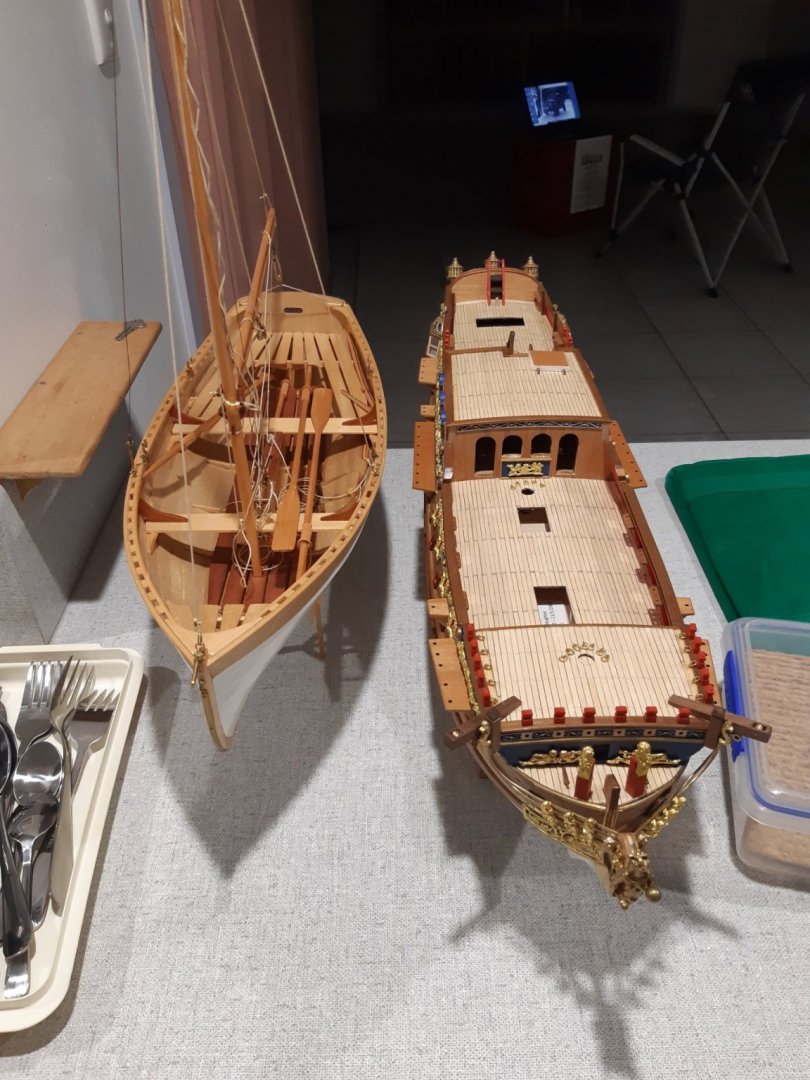-
Posts
1,285 -
Joined
-
Last visited
Content Type
Profiles
Forums
Gallery
Events
Everything posted by Bedford
-
That's looking really good now. As you said, the power stroke may be naturally slowed by the work load but those servos are very low geared so probably not a whole lot slower. I'm really enjoying this experimental build.
- 536 replies
-
- Quadrireme
- radio
-
(and 1 more)
Tagged with:
-
That's coming along nicely, I know you're aiming for the most realistic motion you can get so as a rower I think the strokes are way too fast at this stage. It takes a lot of effort to move oars that big and that long. I'd suggest that the slow speed you showed should be full speed and is it possible to have the power stroke slower than the return stroke to simulate the extra effort? I would also suggest that the pause is too long, it probably only needs to be long enough to be discernible.
- 536 replies
-
- Quadrireme
- radio
-
(and 1 more)
Tagged with:
-
The SHF has opened up to volunteers again, albeit with very restricted numbers so I'd imagine ANMM will follow suit soon as the two organisations work closely. There is always an extra concern for the older members though.
-
Well after approx 17 weeks looking for a new place I have finally found one but I can't move in for about a month. It is within walking distance of the largest saltwater lake in Australia (I think) Lake MacQuarie just a little north of Sydney. So I will take a while to get set up and undoubtedly spend a lot of time rowing and or sailing Miss Caroline on said lake and in between all that I'll get back into the build, the royal yacht awaits.
-
Pleased to have you back Keith, I am still modelling vicariously through the likes of you and Hopefully Michael will be back in the shipyard soon. No idea when I'll find a place to set up again.
-
Thanks Mark, I'm still looking at the coastal lakes, Jervis Bay/Lake Macquarie areas but am keeping an eye on the local market because I may have to concede defeat at some point. I lived here for 30 odd years, My kids grew up here, my daughter died here. It feels like home but I do like to be able to wet the boat often and easily so I want to be near one of those lakes, both of which have community groups I could enjoy being involved in.
-
Yes they are a bit pricey and slow. If you look at the speed though, you're talking a huge amount of leverage i the oars so a couple of seconds to send the handle an inch sends the blade quite a distance.
- 536 replies
-
- Quadrireme
- radio
-
(and 1 more)
Tagged with:
-
Just had a thought, Normal servos are very noisy and using a rotating drive will give non-linear movement to the sweep motion. The stroke will accelerate as it nears mid point and decelerate after. Normally not that noticeable but with long oars it could be very apparent. Are you aware of linear servos? They are quieter and constant speed. I have included a video clip of one brand, they have different sizes and 3 different speed options.
- 536 replies
-
- Quadrireme
- radio
-
(and 1 more)
Tagged with:
-
I know these are terribly historically incorrect but if you're more interested in reliable buoyancy something like these will, at least, give you something to think about https://www.ebay.com.au/itm/140352884990
- 536 replies
-
- Quadrireme
- radio
-
(and 1 more)
Tagged with:
-
With the scarf joints, if anything, the overlap you have on the exterior is the best place to have it. Easy to sand down. As for the strakes all being dead even at the stem, that isn't always the case. The good shipwright will strive to achieve it but there's no structural reason for it and I'd imagine that work boats built quickly and to a cost would be the most likely to have some discrepancy there.
-
I have made a variation on the sewing needle Eberhard refers to. I beat the end of some 2mm brass rod down to a fine blade and cut a groove approx 1mm deep into the end of it and mounted it into a dowel handle. The whole thing is approx 250mm long giving plenty of room to hold it and reach across the deck. All you have to do is hold tension on the bitter end while guiding the line around the bit, pin or cleat.
-
I might just follow along with this too, I really enjoy the inventive side of model building
- 536 replies
-
- Quadrireme
- radio
-
(and 1 more)
Tagged with:
-
Hand scarfing is pretty easy. The norm for the length of the joint is 8 or 12 to one. This may be difficult with planks this thin so you may need to come up with a smaller ratio that's easier to cut. The process is simple:- Measure the length of scarf on the first plank and draw a line square to the plank With the next piece, lay it as it will be joined to the first then flip it lengthwise so you get the correct orientation on the cut and mark as per the first Lay the pieces down on a work surface with a hard edge so that the lower piece is exactly on that edge Lay the second piece on top with its edge right on the line on the lower piece and clamp it all down Use a small and very sharp plane to cut the scarf using the table edge and the line on each plank as datum points
-
It's the small details that take the most effort, just remember to look at them from a few feet away. The fact that they are that good at that scale is very impressive. I think we all know the feeling of a tiny piece we've labored over disappearing into the abyss just as it's finished.
About us
Modelshipworld - Advancing Ship Modeling through Research
SSL Secured
Your security is important for us so this Website is SSL-Secured
NRG Mailing Address
Nautical Research Guild
237 South Lincoln Street
Westmont IL, 60559-1917
Model Ship World ® and the MSW logo are Registered Trademarks, and belong to the Nautical Research Guild (United States Patent and Trademark Office: No. 6,929,264 & No. 6,929,274, registered Dec. 20, 2022)
Helpful Links
About the NRG
If you enjoy building ship models that are historically accurate as well as beautiful, then The Nautical Research Guild (NRG) is just right for you.
The Guild is a non-profit educational organization whose mission is to “Advance Ship Modeling Through Research”. We provide support to our members in their efforts to raise the quality of their model ships.
The Nautical Research Guild has published our world-renowned quarterly magazine, The Nautical Research Journal, since 1955. The pages of the Journal are full of articles by accomplished ship modelers who show you how they create those exquisite details on their models, and by maritime historians who show you the correct details to build. The Journal is available in both print and digital editions. Go to the NRG web site (www.thenrg.org) to download a complimentary digital copy of the Journal. The NRG also publishes plan sets, books and compilations of back issues of the Journal and the former Ships in Scale and Model Ship Builder magazines.






